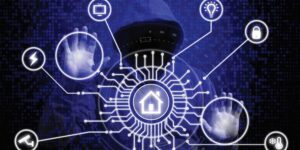
Cybersecurity protection and home security have more in common than one might initially think. In both cases, individuals and organizations take measures to protect themselves from potential threats. With cybercrime and home invasions on the rise, it’s more important than ever to understand how to protect your digital and physical assets. Here are some key similarities between cybersecurity protection and home security:
Layers of Protection:
Just as you might have multiple layers of security at home, such as locks on doors and windows, an alarm system, and a dog, you need multiple layers of protection in the digital world. This might include anti-virus software, firewalls, and two-factor authentication. By having multiple barriers in place, it becomes more difficult for an attacker to breach your defenses.
Risk Assessment:
Before implementing any security measures, it’s important to assess the risks you face. For home security, this might mean evaluating the crime rate in your area or identifying any weak points in your property that could be exploited. In the digital world, a risk assessment might involve identifying the types of threats you’re most likely to face based on the sensitive data you handle, such as financial information or trade secrets.
Monitoring:
Just as you might install security cameras at home to monitor activity, you need to monitor your digital assets for signs of unauthorized access or suspicious activity. This might involve reviewing logs and alerts from your security systems, or conducting regular vulnerability scans to identify potential weaknesses.
Response Planning:
No security system is foolproof, which is why it’s important to have a response plan in place. For home security, this might mean having a safe room or evacuation plan in case of an intruder. In the digital world, you might have a plan in place for how to respond to a data breach or cyberattack, including steps to mitigate damage, restore systems, and notify affected parties.
Education and Training:
Finally, just as you might educate your family on best practices for staying safe at home, you need to educate your employees on how to stay safe online. This might involve training them on how to recognize phishing emails, avoiding public Wi-Fi networks, and creating strong passwords. By making security a top priority and providing ongoing education and training, you can help reduce the risk of a security breach.
In conclusion, cybersecurity protection and home security have many similarities, and it’s important to take a holistic approach to protecting your assets in both the physical and digital worlds. By following best practices and implementing multiple layers of protection, you can reduce the risk of a breach and keep yourself and your assets safe.